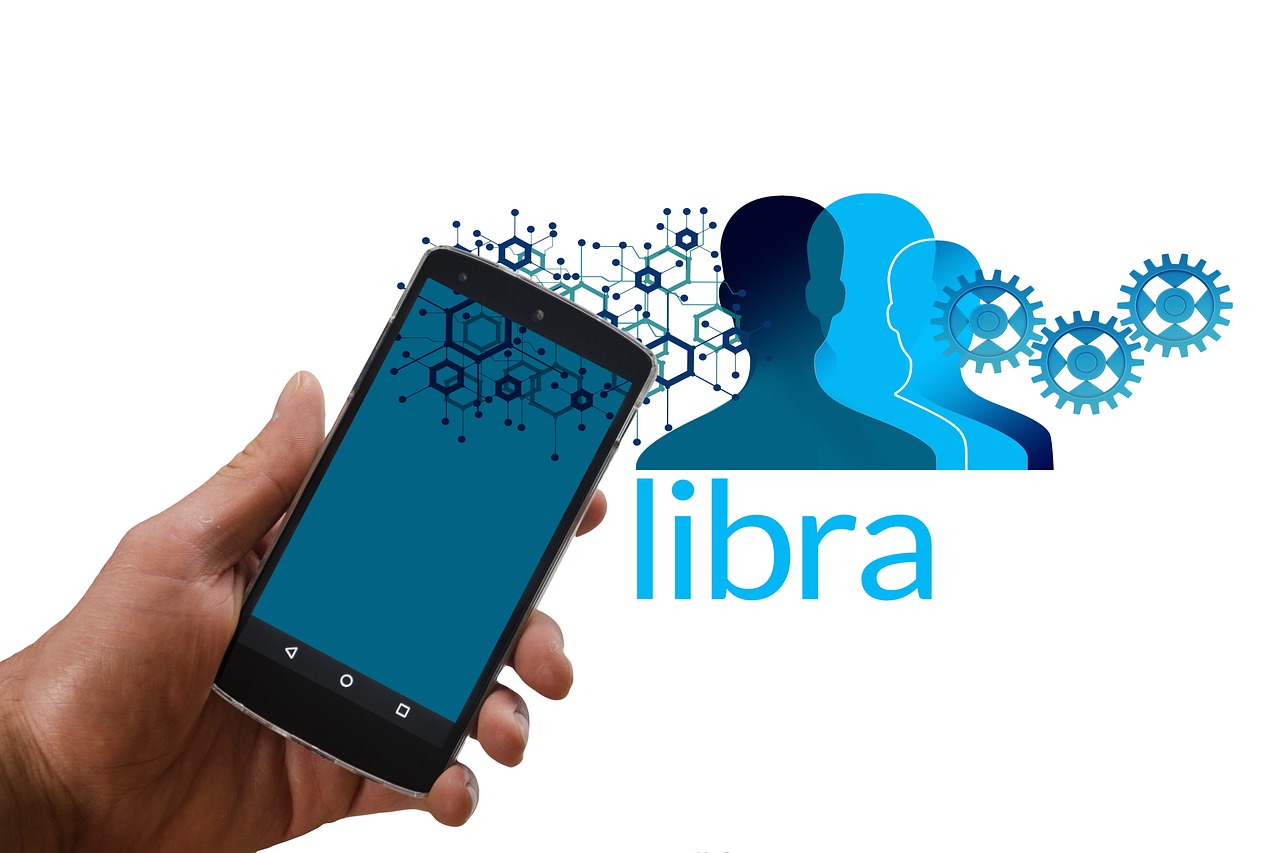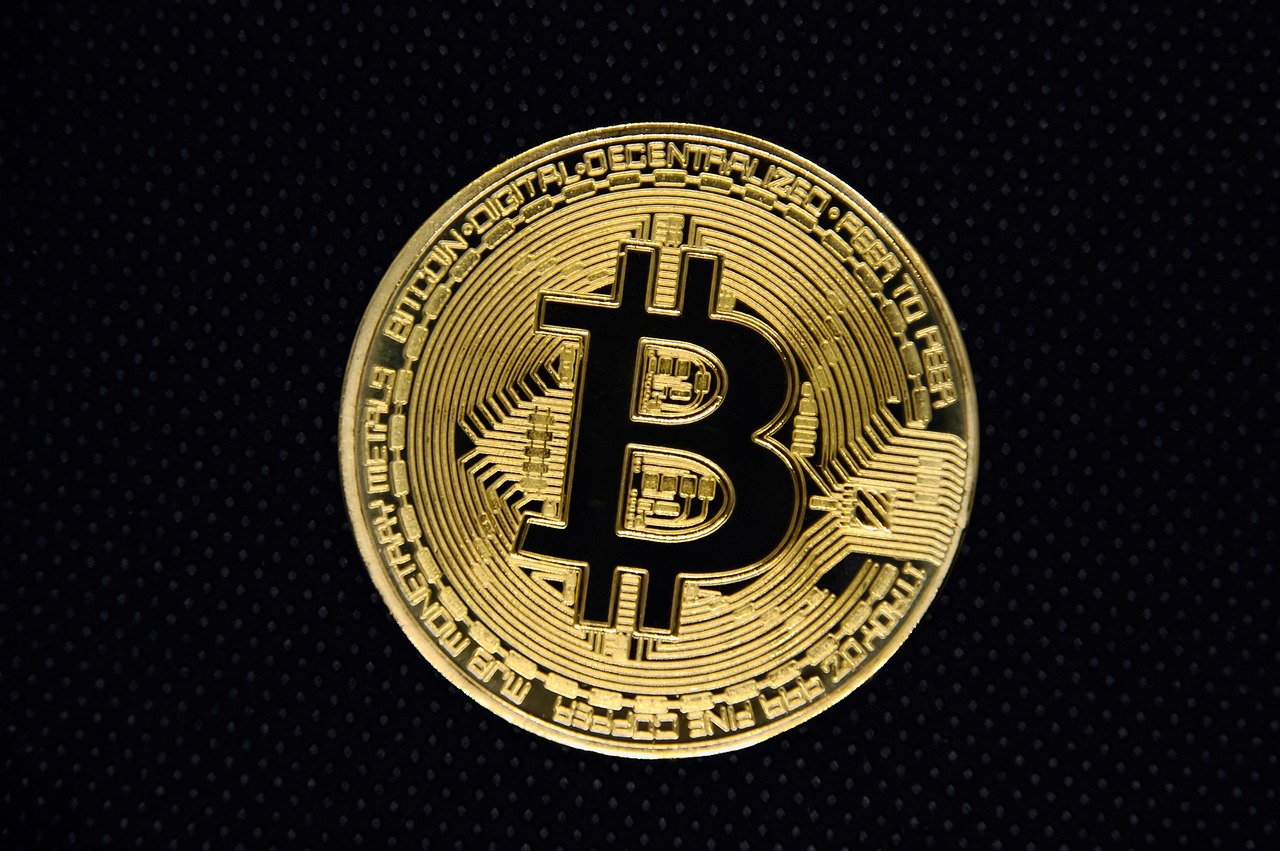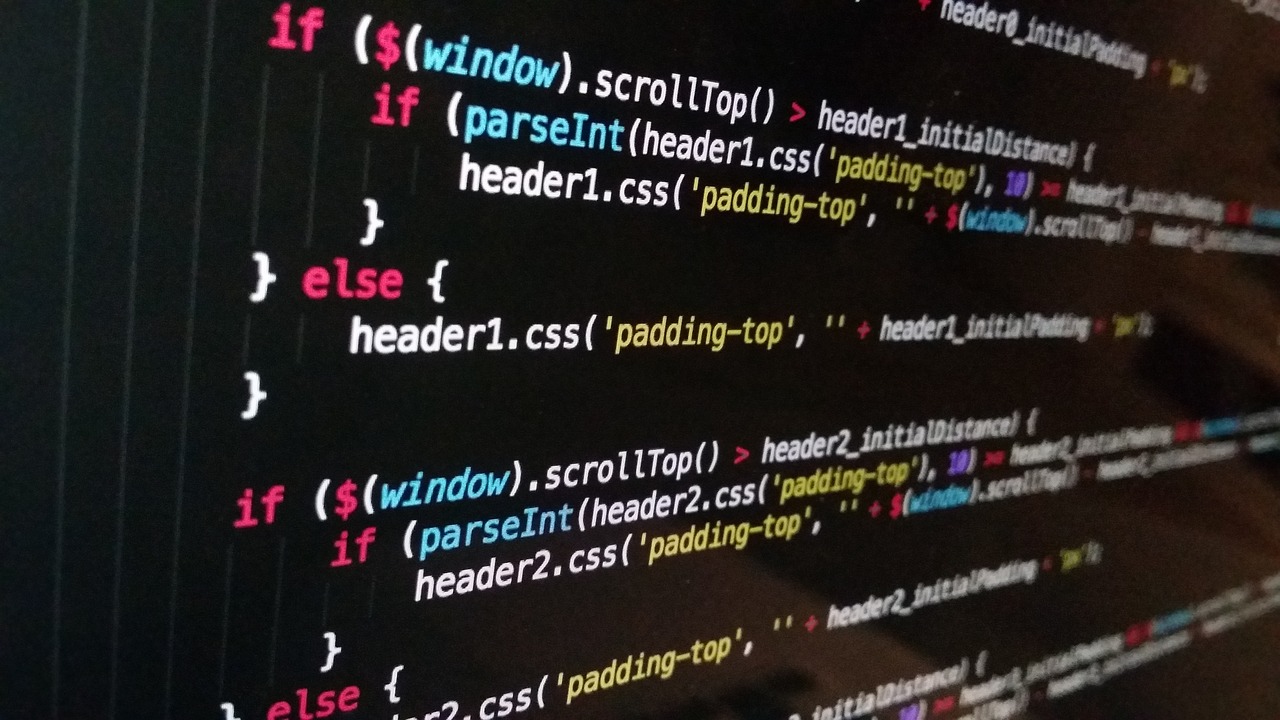The Use of Blockchain in Creating Transparent Grant Management Systems
In today's fast-paced world, where accountability and transparency are more crucial than ever, grant management systems are coming under increasing scrutiny. The traditional methods of managing grants often fall short, leading to inefficiencies, fraud, and distrust among stakeholders. Enter blockchain technology, the revolutionary solution that promises to transform the way grants are managed. By leveraging this decentralized digital ledger, organizations can enhance transparency, streamline processes, and ultimately foster trust among all parties involved.
Imagine a world where every transaction is recorded in a tamper-proof manner, accessible to all stakeholders in real time. This isn’t just wishful thinking; it’s the reality that blockchain can create. With its ability to provide a transparent record of all transactions, blockchain technology stands to redefine how funds are allocated and monitored. No longer will grant managers have to sift through mountains of paperwork or worry about the potential for fraud. Instead, they can rely on a system that offers a clear, auditable trail of every transaction.
Moreover, the integration of blockchain into grant management can significantly reduce administrative burdens. With the use of smart contracts, processes can be automated, allowing for faster disbursement of funds and reducing the potential for human error. This not only saves time but also ensures that resources are allocated efficiently, directly benefiting the intended recipients. In essence, blockchain technology can turn the cumbersome grant management process into a well-oiled machine that operates smoothly and transparently.
As we explore the intricacies of how blockchain can revolutionize grant management, it’s essential to consider the various stakeholders involved. From grantors to beneficiaries, each party has a vested interest in ensuring that funds are managed effectively. By implementing a blockchain-based system, all parties can access real-time data, enhancing accountability and trust. This shift towards transparency not only improves the management process but also builds confidence among stakeholders, ultimately leading to a more effective use of resources.
In summary, the use of blockchain in grant management systems is not just a trend; it’s a necessary evolution. As we delve deeper into this article, we will uncover the current challenges in grant management, the benefits of blockchain, and real-world case studies that demonstrate its effectiveness. Stay tuned as we explore how this innovative technology can pave the way for a more transparent and efficient future in grant management.
- What is blockchain technology?
Blockchain is a decentralized digital ledger that records transactions across multiple computers, ensuring that the data is secure and tamper-proof.
- How can blockchain enhance grant management?
Blockchain enhances grant management by providing a transparent record of transactions, reducing fraud, and streamlining administrative processes through automation.
- What are smart contracts?
Smart contracts are self-executing contracts with the terms of the agreement directly written into code, allowing for automated processes in grant management.
- Are there any case studies of blockchain in grant management?
Yes, there are several case studies that demonstrate the successful implementation of blockchain technology in grant management, showcasing improved transparency and efficiency.
- What are the future trends in grant management?
The future of grant management will likely involve ongoing advancements in technology, including the integration of blockchain with AI and IoT, as well as evolving regulatory frameworks.

Understanding Blockchain Technology
Blockchain technology has taken the world by storm, and for good reason! At its core, blockchain is a decentralized digital ledger that securely records transactions across multiple computers. Imagine a book where every page is not only visible to everyone but also impossible to alter without everyone knowing. That’s the essence of blockchain! It operates on a network of computers, or nodes, which work together to validate and record transactions in a way that is transparent and tamper-proof.
To understand how blockchain works, let's break it down into its fundamental principles. Each transaction is grouped into a block, and once a block is filled, it gets added to a chain of previous blocks—hence the name blockchain. This chain is continuously growing, and each block contains a unique cryptographic hash of the previous block, which ensures that no one can tamper with the data without altering every subsequent block. It’s like a chain of dominoes; if you push one, the whole line falls, revealing the importance of maintaining integrity in the system.
One of the standout features of blockchain is its transparency. Every participant in the network has access to the entire blockchain, allowing them to see all transactions that have occurred. This visibility can foster a sense of trust among stakeholders, as everyone can independently verify the data. Moreover, the use of cryptographic techniques ensures that sensitive information remains secure while still allowing for public verification. It's a delicate balance of privacy and transparency that blockchain achieves brilliantly.
Additionally, blockchain operates under the principle of consensus mechanisms. These are protocols that consider a transaction as valid only when a majority of nodes agree on its authenticity. This decentralized agreement process eliminates the need for a central authority, which is often a point of failure in traditional systems. Think of it as a group of friends deciding where to eat; if everyone agrees on a restaurant, then that’s where you go, ensuring that no single person can dictate the choice.
In summary, blockchain technology is not just a buzzword; it represents a revolutionary way of conducting transactions and managing data. Its decentralized nature, combined with transparency and security, positions it as a game-changer in various industries, including grant management. As we delve deeper into the challenges in grant management, it's vital to understand how blockchain can be a beacon of hope in addressing these issues.

Current Challenges in Grant Management
Grant management is a complex process that often faces a myriad of challenges, which can significantly hinder its effectiveness. One of the most pressing issues is fraud. Fraudulent activities can occur at various stages of the grant lifecycle, from application to disbursement, and can lead to the misallocation of funds. This not only jeopardizes the intended projects but also erodes trust among stakeholders, including donors, grantors, and beneficiaries. Imagine a situation where funds meant for community development are siphoned off due to deceitful practices; the ramifications can be devastating.
Another major hurdle is the lack of transparency inherent in many traditional grant management systems. Without a clear view of how funds are allocated and spent, stakeholders may find it challenging to hold each other accountable. This opacity can create an environment ripe for mismanagement, where funds are misused or unaccounted for. For instance, if a nonprofit organization receives a grant but fails to provide detailed reports on fund usage, it can lead to suspicions and a breakdown of trust. Stakeholders may ask, "Where did the money go?" and without proper answers, confidence in the system diminishes.
In addition to fraud and transparency issues, administrative inefficiencies plague grant management. The traditional processes often involve cumbersome paperwork, manual data entry, and lengthy approval cycles, which can delay the distribution of funds. As a result, projects may stall, and beneficiaries who rely on these grants for support may suffer. Think of it as trying to navigate a maze; the more convoluted the path, the longer it takes to reach the destination. This inefficiency can lead to increased costs and a waste of valuable resources.
To further illustrate these challenges, consider the following table that summarizes the key issues faced in grant management:
| Challenge | Description | Impact |
|---|---|---|
| Fraud | Misuse of funds and deceptive practices | Loss of trust and funds |
| Lack of Transparency | Obscured fund allocation and usage | Accountability issues |
| Administrative Inefficiencies | Cumbersome processes and delays | Increased costs and stalled projects |
These challenges highlight the urgent need for innovative solutions that can streamline grant management processes. The stakes are high, and the consequences of failing to address these issues can be profound. Stakeholders must come together to explore new technologies and methodologies that can enhance the overall efficiency and effectiveness of grant management systems.

Fraud and Mismanagement Issues
Fraud and mismanagement are like dark clouds looming over the landscape of grant distribution, casting shadows on the intentions of even the most well-meaning organizations. When funds are allocated for specific projects, they are expected to create positive change. However, the reality is often starkly different. Fraudulent activities can take many forms, from misappropriation of funds to falsified reports, leading to a significant erosion of trust among stakeholders. Did you know that according to recent studies, up to 30% of grant funds can be lost to fraud and inefficiencies? This staggering statistic highlights the urgent need for robust systems that can safeguard against such occurrences.
One common scenario involves individuals or organizations that submit inflated expenses or fictitious invoices, siphoning off money intended for genuine projects. This not only robs the intended beneficiaries of vital resources but also damages the reputation of the granting organization. When trust is broken, it becomes increasingly challenging to secure future funding or support from stakeholders. Furthermore, the implications of such fraud extend beyond financial losses; they create a ripple effect that can undermine entire communities that rely on these funds for development and support.
To illustrate the impact of mismanagement further, consider the following key points:
- Loss of Resources: When funds are mismanaged or misappropriated, the intended projects often fail to materialize, leading to wasted resources that could have been used elsewhere.
- Decreased Trust: Stakeholders, including donors and beneficiaries, may lose faith in the system, making them hesitant to engage in future projects.
- Legal Repercussions: Fraudulent activities can lead to legal actions against individuals or organizations, resulting in financial penalties and damage to reputations.
Real-world examples of grant mismanagement reveal the stark consequences of these issues. For instance, a prominent nonprofit organization once faced scrutiny after it was discovered that a significant portion of its funding was being misallocated due to poor oversight. This led to a public outcry, reduced donor confidence, and ultimately, a decline in future funding opportunities. Such cases serve as cautionary tales, emphasizing the need for transparent and accountable systems.
In addition to the financial ramifications, the mismanagement of grants has a profound impact on the beneficiaries who depend on these resources. Imagine a community waiting eagerly for funds to build a new school or provide healthcare services, only to have those funds mismanaged or stolen. The disappointment and frustration felt by these individuals can be devastating. They are left without the support they desperately need, and their hopes for a better future are dashed.
In conclusion, the issues of fraud and mismanagement in grant distribution are not merely administrative challenges; they are significant barriers to progress that can stifle innovation and harm communities. As we explore solutions like blockchain technology, it becomes increasingly clear that enhancing transparency and accountability is not just beneficial but essential for restoring trust and ensuring that funds reach those who need them most.
- What are the most common types of fraud in grant management? Common types include falsified invoices, misappropriation of funds, and inflated expenses.
- How does mismanagement impact beneficiaries? Mismanagement can lead to a lack of resources for essential services, affecting the community's health, education, and overall well-being.
- What can be done to prevent fraud in grant management? Implementing technologies like blockchain for transparency and regular audits can significantly reduce the risk of fraud.

Case Studies of Mismanagement
When it comes to grant management, the stakes are incredibly high. Mismanagement can lead to not just financial losses, but also a significant erosion of trust among stakeholders. Let's take a closer look at some real-world examples where mismanagement has reared its ugly head, showcasing the dire need for more robust systems.
One notable case is the National Endowment for the Arts (NEA), which faced scrutiny over the distribution of funds intended for community arts projects. Reports revealed that a substantial portion of the funds was misallocated, with some grants going to projects that did not meet the required criteria. This mismanagement not only wasted taxpayer money but also left deserving projects unfunded, leading to public outcry and a loss of confidence in the agency's ability to effectively manage grants.
Another infamous example involves a nonprofit organization known for its health initiatives. In a shocking turn of events, it was discovered that a significant amount of grant money was funneled into personal expenses by a few key individuals within the organization. This case highlighted the vulnerabilities in oversight and the potential for fraud when there are inadequate checks and balances in place. The fallout was severe, resulting in legal actions and a tarnished reputation that affected not only the organization but also the beneficiaries who relied on its programs.
In addition to these specific cases, the European Union's funding programs have also faced challenges. Various audits have revealed inconsistencies in how funds were reported and utilized, leading to questions about accountability. For instance, some projects reported inflated costs or failed to provide adequate documentation on how funds were spent. This lack of transparency can lead to a significant loss of public trust and a reluctance from stakeholders to engage in future funding opportunities.
These case studies underscore a critical point: mismanagement in grant distribution not only affects the flow of resources but also has a ripple effect on the communities that depend on these funds. The consequences can be devastating, leaving vital projects underfunded and beneficiaries without the support they need. To combat these issues, it's essential to implement systems that enhance transparency and accountability, such as blockchain technology. By learning from these past mistakes, we can pave the way for a more efficient and trustworthy grant management process.
- What are the main causes of mismanagement in grant distribution? Mismanagement can stem from inadequate oversight, lack of transparency, and insufficient checks and balances within organizations.
- How can blockchain technology help prevent grant mismanagement? Blockchain provides a transparent and tamper-proof record of all transactions, making it easier to track fund usage and hold parties accountable.
- Are there successful examples of blockchain implementation in grant management? Yes, various organizations have successfully implemented blockchain to enhance transparency and efficiency in their grant processes.
- What future trends should we expect in grant management? The integration of blockchain with other technologies like AI and IoT is expected to further enhance grant management systems.

Impact on Beneficiaries
The impact of grant mismanagement on beneficiaries is profound and often devastating. When funds are misallocated or lost to fraudulent activities, the very individuals and communities that rely on these resources suffer the most. Imagine a nonprofit organization that has secured a grant to provide essential healthcare services to low-income families. If the funds are siphoned off due to mismanagement, the intended recipients may not receive the medical attention they desperately need. This scenario is not just hypothetical; it happens all too often in the world of grant management.
Moreover, the consequences of mismanagement extend beyond immediate financial losses. They can erode trust in the entire system of grant distribution. Beneficiaries may feel disillusioned and lose faith in organizations meant to support them. This lack of trust can lead to a cycle of disengagement, where communities become hesitant to participate in future programs or apply for grants, fearing that their needs will not be met. In essence, when the integrity of grant management is compromised, it creates a ripple effect that can hinder progress and development in the very areas that need it the most.
To illustrate the impact on beneficiaries more clearly, consider the following points:
- Access to Resources: Mismanagement can lead to delays in fund disbursement, meaning beneficiaries may not receive timely support.
- Quality of Services: When funds are mismanaged, the quality of services provided to beneficiaries often diminishes, affecting their overall well-being.
- Long-term Effects: The lack of reliable funding can stymie long-term projects that aim to uplift communities, leaving beneficiaries in a perpetual cycle of need.
In conclusion, the ramifications of grant mismanagement on beneficiaries are far-reaching. It is crucial for organizations to implement robust systems, such as blockchain technology, to ensure that funds are managed transparently and efficiently. By doing so, they can safeguard the interests of those they serve and foster a more trustworthy and effective grant management environment.
Q1: How does grant mismanagement affect beneficiaries?
A1: Grant mismanagement can lead to delays in fund distribution, reduced quality of services, and long-term negative impacts on communities that rely on these resources for support.
Q2: What role can blockchain play in mitigating these issues?
A2: Blockchain technology can enhance transparency and accountability in grant management, ensuring that funds are allocated correctly and efficiently, thus benefiting the intended recipients.
Q3: Are there examples of successful blockchain implementation in grant management?
A3: Yes, several organizations have successfully integrated blockchain into their grant management processes, leading to improved transparency and reduced fraud. These case studies highlight best practices and outcomes.
Q4: What future trends should we expect in grant management?
A4: Future trends may include greater integration of blockchain with other technologies like AI and IoT, as well as evolving regulatory frameworks to adapt to these advancements.

Administrative Inefficiencies
In the realm of grant management, can feel like a heavy anchor, dragging down the entire process. Imagine a ship trying to sail smoothly, but every time it catches a gust of wind, it’s held back by a cumbersome load. This analogy is quite relevant when we consider how traditional grant management systems operate. Often, these systems are bogged down by manual processes, excessive paperwork, and outdated technology, leading to significant delays and increased costs.
One of the primary issues is the reliance on legacy systems that were not designed to handle the complexities of modern grant management. These systems often require extensive manual input, which not only consumes valuable time but also increases the likelihood of human error. For instance, if a grant manager has to sift through piles of paperwork to verify fund allocations, it can take days, if not weeks, to finalize reports. This delay can lead to missed opportunities for funding and support for those who desperately need it.
Furthermore, the lack of real-time data access can exacerbate these inefficiencies. Stakeholders often find themselves waiting for updates or reports that are generated at the end of a long cycle, leaving them in the dark about how funds are being utilized. This disconnect can create a ripple effect of uncertainty and mistrust among all parties involved. To illustrate this point, consider the following table that outlines common administrative inefficiencies in grant management:
| Issue | Description | Impact |
|---|---|---|
| Manual Processes | Heavy reliance on paperwork and manual data entry. | Increased errors and time delays. |
| Lack of Transparency | Difficulty in tracking fund allocations and usage. | Reduced trust among stakeholders. |
| Delayed Reporting | Reports generated at the end of cycles rather than in real-time. | Informed decision-making is hindered. |
These inefficiencies not only slow down the grant management process but also lead to increased administrative costs. Organizations may find themselves spending more on staffing and resources to manage these outdated systems rather than focusing on their core mission. The irony is that the very systems designed to facilitate support for beneficiaries often become the bottleneck that hinders progress.
To combat these administrative inefficiencies, there is a growing recognition that adopting innovative technologies, such as blockchain, can revolutionize the grant management landscape. By automating processes and providing real-time access to data, blockchain can streamline operations, reduce the administrative burden, and ultimately enhance the overall efficiency of grant management systems. Imagine a world where grant managers can effortlessly track funds, verify allocations, and generate reports in real-time with just a few clicks. This is not just a dream—it’s a potential reality with the right technological advancements.
In conclusion, addressing administrative inefficiencies in grant management is not just about improving processes; it's about ensuring that the resources meant for beneficiaries reach them in a timely and effective manner. By embracing modern solutions, we can pave the way for a more transparent, efficient, and trustworthy grant management system that serves all stakeholders involved.

Benefits of Blockchain in Grant Management
Implementing blockchain technology in grant management systems isn't just a trend; it's a revolutionary step towards creating a more transparent, efficient, and trustworthy environment for all stakeholders involved. With the ability to securely record transactions and provide real-time access to information, blockchain offers a myriad of benefits that can significantly enhance the grant management process. Let's explore some of these advantages in detail.
One of the most compelling benefits of blockchain is its capacity for enhanced transparency. Traditional grant management systems often operate in silos, making it difficult for stakeholders to track how funds are allocated and spent. With blockchain, every transaction is recorded on a decentralized ledger that is accessible to all relevant parties. This means that donors, grant recipients, and oversight organizations can monitor fund usage in real-time, leading to greater accountability. Imagine a world where every dollar spent is visible to everyone involved; this level of transparency can build a strong foundation of trust among stakeholders.
Moreover, blockchain significantly reduces the risk of fraud. In the realm of grant management, fraudulent activities can take many forms, from misreporting expenses to diverting funds for unauthorized purposes. The immutable nature of blockchain means that once a transaction is recorded, it cannot be altered or deleted. This feature acts as a powerful deterrent against fraudulent behavior. For instance, if a grant recipient attempts to falsify their spending reports, the discrepancies can be easily identified and traced back to the original transaction on the blockchain.
In addition to transparency and fraud prevention, blockchain can also streamline processes. Traditional grant management often involves cumbersome paperwork and lengthy approval processes, which can lead to delays and increased administrative costs. By utilizing smart contracts, organizations can automate various aspects of grant management. Smart contracts are self-executing contracts with the terms of the agreement directly written into code. This means that once specific conditions are met, funds can be automatically released without the need for manual intervention. The result? Faster processing times and reduced administrative burdens.
To better illustrate these benefits, consider the following table that summarizes the key advantages of using blockchain in grant management:
| Benefit | Description |
|---|---|
| Enhanced Transparency | Real-time tracking of fund usage accessible to all stakeholders. |
| Fraud Reduction | Immutable records prevent alterations and deter fraudulent activities. |
| Streamlined Processes | Automation through smart contracts reduces delays and administrative costs. |
Additionally, the integration of blockchain technology can lead to better data management. With a single source of truth, all parties involved can access up-to-date information without the risk of discrepancies. This not only improves communication but also ensures that everyone is on the same page, which is crucial in maintaining the integrity of the grant management process.
In summary, the benefits of blockchain in grant management are profound and multifaceted. By enhancing transparency, reducing fraud, and streamlining processes, blockchain technology can transform the way grants are managed. This shift not only benefits organizations but also ensures that the funds reach the intended beneficiaries efficiently and effectively. As we continue to explore the potential of blockchain, it's clear that the future of grant management is bright and full of promise.
- What is blockchain technology? Blockchain is a decentralized digital ledger that records transactions securely across multiple computers.
- How does blockchain enhance transparency in grant management? It allows stakeholders to track fund usage in real-time, providing a clear and accessible record of all transactions.
- Can blockchain help reduce fraud in grant management? Yes, the immutable nature of blockchain records deters fraudulent activities by making it difficult to alter or delete transactions.
- What are smart contracts? Smart contracts are self-executing contracts with the terms of the agreement directly written into code, automating processes and reducing delays.

Enhanced Transparency
One of the most exciting aspects of blockchain technology is its ability to enhance transparency in grant management systems. Imagine a world where every transaction related to grant funding is recorded on a public ledger that anyone can access. This is not just a dream; it's the reality that blockchain offers. With every financial movement documented in real time, stakeholders can track how funds are being used, ensuring that every dollar is accounted for. This level of visibility is crucial in building trust among all parties involved—grantors, beneficiaries, and the public.
The transparency provided by blockchain can significantly reduce the potential for fraud. In traditional grant management systems, the opacity of processes often leads to misappropriation of funds. With blockchain, however, each transaction is immutable and publicly verifiable, making it exceedingly difficult for anyone to manipulate the records without detection. This creates a culture of accountability, where grant recipients know they are being watched, thus incentivizing them to use funds responsibly.
Consider how this technology could transform the experience for various stakeholders. For instance, organizations that receive grants can provide real-time updates on their spending, allowing grantors to monitor progress and ensure that funds are being used as intended. This not only fosters a collaborative environment but also empowers beneficiaries by keeping them informed about the status of their funding.
To illustrate this point, let's look at a hypothetical example. Imagine a nonprofit organization that has received a grant to build a community center. By utilizing blockchain, they can share their spending records with the grantor and the community. Everyone can see how much money has been allocated for materials, labor, and other expenses. This level of openness can help to prevent misunderstandings and build stronger relationships between the organization and its stakeholders.
Additionally, the implementation of blockchain can facilitate easier audits. Traditional audits can be time-consuming and costly, often requiring extensive documentation and verification processes. However, with blockchain, auditors can access a single source of truth. They can quickly verify transactions and ensure compliance without sifting through piles of paperwork. This not only saves time but also reduces administrative burdens, allowing organizations to focus more on their mission rather than on compliance.
In summary, the enhanced transparency offered by blockchain technology is a game-changer for grant management systems. By providing a clear and accessible record of transactions, blockchain fosters trust, accountability, and efficiency. As more organizations begin to embrace this technology, we can expect to see a significant shift in how grants are managed, ultimately benefiting all stakeholders involved.
- What is blockchain technology? Blockchain is a decentralized digital ledger that records transactions securely across multiple computers.
- How does blockchain enhance transparency in grant management? It provides a public record of all transactions, allowing stakeholders to track fund usage in real time.
- Can blockchain help reduce fraud in grant management? Yes, the immutable nature of blockchain makes it difficult to manipulate records, thereby reducing the potential for fraud.
- What are the benefits of using blockchain for audits? Blockchain allows for quicker and more efficient audits by providing a single source of truth for transactions.

Streamlined Processes
One of the most compelling advantages of implementing blockchain technology in grant management is the potential for . Traditional grant management systems often involve a labyrinth of paperwork, approvals, and manual entry that can lead to delays, errors, and frustration for all parties involved. Imagine a world where grant applications and disbursements are as seamless as sending an email—this is the promise of blockchain. By leveraging smart contracts, organizations can automate various stages of the grant lifecycle, ensuring that funds are released only when specific conditions are met.
For instance, consider a scenario where a nonprofit organization applies for a grant to fund a community project. With blockchain, the entire process can be digitized, allowing the organization to submit its application online. Once the application is received, a smart contract can automatically verify the eligibility criteria, such as the organization’s registration status and project alignment with funding goals. If everything checks out, the smart contract can trigger the release of funds without the need for manual intervention. This not only saves time but also reduces the burden on administrative staff who are often overwhelmed with paperwork.
Furthermore, the transparency offered by blockchain means that all stakeholders can track the progress of the grant in real-time. This level of visibility can significantly reduce the number of inquiries and follow-ups, as everyone involved has access to the same information. For example, a simple dashboard could display the status of the grant application, fund allocation, and even project milestones. This eliminates the need for tedious status update emails or phone calls, allowing organizations to focus on what really matters—making a positive impact in their communities.
The automation of processes through blockchain also minimizes human error, which is a common pitfall in traditional systems. With fewer manual entries, the chances of mistakes—such as incorrect fund amounts or misplaced documents—are drastically reduced. This leads to a more efficient and reliable grant management process, which is crucial for maintaining the trust of all stakeholders involved.
In addition, organizations can benefit from reduced operational costs. By streamlining processes and minimizing administrative burdens, funds that would have been spent on manual processing can be redirected toward the actual projects that need support. The financial implications can be significant, especially for organizations operating on tight budgets.
Overall, the integration of blockchain technology into grant management systems heralds a new era of efficiency and effectiveness. As organizations begin to adopt these innovative solutions, the landscape of grant management will undoubtedly shift towards a more transparent, efficient, and accountable future.
- What is blockchain technology?
Blockchain is a decentralized digital ledger that securely records transactions across multiple computers, making it transparent and tamper-proof. - How does blockchain improve grant management?
By automating processes through smart contracts and providing real-time tracking of funds, blockchain enhances transparency and reduces administrative burdens. - What are smart contracts?
Smart contracts are self-executing contracts with the terms of the agreement directly written into code, allowing for automatic fund release upon meeting specified conditions. - Can blockchain reduce fraud in grant management?
Yes, the transparency and security of blockchain can help mitigate fraudulent activities by providing a clear and immutable record of all transactions.

Case Studies of Blockchain Implementation
As the world embraces the digital age, several organizations have taken the leap into utilizing blockchain technology for grant management. These case studies not only showcase the potential of blockchain but also provide crucial insights into the practical applications and outcomes of its implementation. One standout example is the use of blockchain by the World Wildlife Fund (WWF) in their grant distribution processes. By integrating blockchain, WWF was able to create a transparent and traceable system that allowed stakeholders to track the flow of funds in real-time. This transparency fostered trust and accountability, which are often lacking in traditional systems.
Another notable case is the United Nations Development Programme (UNDP), which launched a pilot project using blockchain to manage its grant funds for disaster relief. The initiative aimed to ensure that funds reached the intended beneficiaries without the risk of mismanagement or fraud. By utilizing smart contracts, UNDP automated the disbursement of funds, ensuring that they were released only when specific conditions were met. This not only reduced administrative burdens but also enhanced the overall efficiency of the grant management process.
In addition to these examples, the Charity: Water organization has also adopted blockchain to improve transparency in its funding initiatives. By documenting every transaction on a public ledger, Charity: Water has empowered donors to see exactly how their contributions are being utilized. This level of transparency has significantly increased donor confidence and engagement, as they can track the impact of their donations in real-time.
| Organization | Project | Outcome |
|---|---|---|
| World Wildlife Fund (WWF) | Grant Distribution | Increased transparency and trust |
| United Nations Development Programme (UNDP) | Disaster Relief Funds | Automated disbursement and reduced fraud |
| Charity: Water | Funding Initiatives | Enhanced donor confidence and engagement |
These case studies illustrate the transformative power of blockchain in grant management. They highlight not only the successes but also the challenges faced during implementation. Organizations learned valuable lessons about the importance of stakeholder buy-in, the need for robust training, and the necessity of adapting existing processes to fully leverage the benefits of blockchain technology.
As more organizations explore the potential of blockchain for grant management, it’s crucial to analyze these case studies to understand what works and what doesn’t. The insights gained can guide future implementations and help create a more transparent, efficient, and accountable grant management system.
- What is blockchain technology? Blockchain is a decentralized digital ledger that securely records transactions across multiple computers, ensuring transparency and tamper-proof records.
- How does blockchain improve grant management? By providing a transparent record of all transactions, blockchain enhances accountability and reduces the risk of fraud and mismanagement.
- What are some successful examples of blockchain in grant management? Organizations like WWF, UNDP, and Charity: Water have successfully implemented blockchain to improve transparency and efficiency in their funding processes.
- What challenges might organizations face when implementing blockchain? Challenges can include resistance to change, the need for stakeholder education, and the adaptation of existing processes to integrate blockchain effectively.

Successful Pilot Programs
When it comes to exploring the transformative potential of blockchain in grant management, several pilot programs have emerged as shining examples. These initiatives not only demonstrate the feasibility of blockchain technology but also highlight its ability to tackle the persistent challenges that plague traditional grant management systems. One notable case is the World Food Programme (WFP), which implemented a blockchain-based system known as Building Blocks. This program allowed the WFP to provide food assistance to refugees in Jordan using a digital wallet powered by blockchain technology. The results were nothing short of remarkable: the WFP reported a cost reduction of approximately 98% in transaction fees and a significant increase in transparency, enabling donors to track how their contributions were being utilized.
Another compelling example can be found in the United Nations Development Programme (UNDP), which launched a pilot project in 2019 to enhance the transparency of its grant distribution processes. By leveraging blockchain, the UNDP was able to create a transparent ledger that recorded every transaction related to grant funding. This initiative not only improved accountability but also fostered greater trust among stakeholders, as they could easily verify the flow of funds. The success of this pilot program has prompted discussions about broader implementation across various UN agencies.
Furthermore, the European Commission has also explored blockchain technology in its Horizon 2020 funding program. A pilot project was conducted to assess how blockchain could improve the management of research grants. The findings indicated that blockchain not only streamlined the application process but also reduced the administrative burden associated with managing and auditing grant funds. The European Commission is now considering integrating blockchain solutions into its future funding frameworks, which could set a precedent for other governmental bodies worldwide.
In addition to these examples, various non-profit organizations have initiated their own pilot programs to explore blockchain's potential. For instance, the Open Collective platform uses blockchain to facilitate transparent funding for open-source projects. Contributors can see exactly how funds are allocated and spent, which has led to increased participation and trust within the community. This model serves as an excellent blueprint for other organizations looking to enhance transparency in their funding processes.
These pilot programs not only illustrate the practical applications of blockchain in grant management but also provide valuable insights into best practices and potential pitfalls. By analyzing the successes and challenges faced by these initiatives, organizations can better prepare for the implementation of blockchain technology in their own grant management systems. The lessons learned from these programs underscore the importance of stakeholder engagement, robust technological infrastructure, and ongoing evaluation to ensure successful outcomes.
- What is blockchain technology? Blockchain is a decentralized digital ledger that records transactions across multiple computers, ensuring transparency and security.
- How does blockchain improve grant management? It enhances transparency, reduces fraud, and streamlines processes through automation and real-time tracking.
- Can blockchain eliminate fraud in grant management? While it cannot completely eliminate fraud, blockchain significantly reduces opportunities for fraudulent activities through its transparent and tamper-proof nature.
- What are some successful examples of blockchain in grant management? Notable examples include the World Food Programme's Building Blocks initiative and the UNDP's pilot project for transparent grant distribution.

Lessons Learned from Implementation
Implementing blockchain technology in grant management systems has revealed several important lessons that organizations must consider for future projects. One of the most significant insights is the necessity for thorough stakeholder engagement. In many cases, organizations that rushed the implementation process without involving key stakeholders faced resistance and confusion. Engaging all parties—from grant managers to beneficiaries—ensures that the system meets their needs and addresses their concerns, ultimately fostering a sense of ownership and trust in the new technology.
Another critical lesson learned is the importance of customization. While blockchain offers a robust framework, a one-size-fits-all approach can lead to complications. Each organization has unique processes and requirements, and tailoring the blockchain solution to fit these needs is essential for maximizing effectiveness. For instance, organizations that took the time to adapt smart contracts to their specific grant processes saw a significant increase in efficiency and transparency.
Additionally, the experience has highlighted the need for ongoing training and support. Many users of blockchain technology in grant management reported feeling overwhelmed by the new system. Providing comprehensive training and continuous support can help users become more comfortable and proficient, thus enhancing overall productivity. Organizations that prioritized user education often found smoother transitions and greater acceptance of the new system.
Moreover, organizations learned that data security is paramount. Blockchain's inherent security features are a significant advantage; however, organizations must still implement best practices for data protection. Regular audits and updates are necessary to safeguard sensitive information and maintain stakeholder trust. Failure to prioritize security can lead to breaches that undermine the entire system.
Finally, the importance of flexibility in blockchain implementation cannot be overstated. The technology is still evolving, and organizations must be prepared to adapt their systems as new advancements emerge. Those that remained open to innovation and willing to iterate on their processes found greater long-term success. This adaptability not only helps in refining the current system but also positions organizations to take advantage of future technological developments.
In summary, the lessons learned from implementing blockchain in grant management systems underscore the significance of stakeholder engagement, customization, ongoing training, data security, and flexibility. By taking these factors into account, organizations can enhance their chances of success and create a more transparent, efficient, and trustworthy grant management process.
- What is blockchain technology?
Blockchain is a decentralized digital ledger that securely records transactions across multiple computers, ensuring transparency and tamper-proof records. - How does blockchain improve grant management?
By enhancing transparency, reducing fraud, and streamlining processes, blockchain technology can significantly improve the efficiency and accountability of grant management systems. - What are some challenges faced during blockchain implementation?
Common challenges include stakeholder resistance, the need for customization, ensuring data security, and providing adequate training and support. - Can blockchain be integrated with other technologies?
Yes, blockchain can be combined with technologies like AI and IoT to further enhance grant management systems and improve overall functionality. - What should organizations prioritize when implementing blockchain?
Organizations should focus on stakeholder engagement, customization, ongoing training, data security, and flexibility to ensure a successful implementation.

Future Trends in Grant Management
The landscape of grant management is evolving rapidly, and it's essential to stay ahead of the curve. As we look towards the future, several key trends are emerging that promise to revolutionize how grants are managed and distributed. One of the most significant trends is the integration of blockchain technology with other advanced technologies such as Artificial Intelligence (AI) and the Internet of Things (IoT). This convergence of technologies can create a more robust and efficient grant management system, making it easier to track funds, assess outcomes, and ensure accountability.
For instance, combining blockchain with AI can enhance the decision-making process by analyzing vast amounts of data to identify patterns and predict outcomes. Imagine a system where grant applications are assessed not just on their merits but also on predictive analytics that evaluate their potential impact. This could significantly reduce the time spent on manual reviews and increase the likelihood of funding being directed toward the most effective projects.
Moreover, the integration of IoT devices can provide real-time monitoring of funded projects. These devices can collect data on how resources are being utilized, which can then be recorded on the blockchain. This not only ensures that funds are being used appropriately but also provides a wealth of information that can be used to improve future grant allocations. For example, if a particular project consistently underperforms, data from IoT devices can help identify the issues, allowing for timely interventions.
Another trend to watch is the growing importance of regulatory considerations. As blockchain technology matures, regulatory frameworks will need to adapt to address the unique challenges it presents. This means that grant management organizations will need to stay informed about legal developments and ensure compliance with new regulations. They might also need to work closely with regulatory bodies to develop guidelines that facilitate the safe and effective use of blockchain in grant management.
In addition, the future of grant management will likely see an increased emphasis on collaboration and partnerships. Organizations may begin to form alliances with tech companies, data analysts, and other stakeholders to leverage their expertise and resources. This could lead to the development of innovative solutions that enhance the overall efficiency of grant management systems. The sharing of best practices and lessons learned will be crucial in this collaborative environment, allowing organizations to avoid common pitfalls and maximize their impact.
As we embrace these future trends, it's important to recognize that the ultimate goal is to create a more transparent, efficient, and accountable grant management system. By leveraging the power of technology, we can ensure that funds are allocated effectively, projects are monitored closely, and beneficiaries receive the support they need. The future is bright for grant management, and those who are willing to adapt and innovate will be best positioned to thrive in this new landscape.
- What is blockchain technology? Blockchain is a decentralized digital ledger that securely records transactions across multiple computers, ensuring transparency and tamper-proof data.
- How can blockchain improve grant management? By enhancing transparency, reducing fraud, and streamlining processes through automation, blockchain can significantly improve the efficiency of grant management systems.
- What are the potential challenges of implementing blockchain in grant management? Challenges may include regulatory compliance, the need for technological infrastructure, and the necessity for stakeholder education and buy-in.
- How can AI and IoT enhance grant management? AI can analyze data for better decision-making, while IoT can provide real-time monitoring of projects, ensuring funds are used effectively.

Integration with Other Technologies
As we look toward the future of grant management, the integration of blockchain technology with other cutting-edge technologies is set to revolutionize the landscape. Imagine a world where artificial intelligence (AI) and the Internet of Things (IoT) work hand in hand with blockchain to create an ecosystem that enhances not only transparency but also efficiency in managing grants. This synergy can lead to a more robust system that addresses the challenges faced in traditional grant management.
One of the most exciting aspects of this integration is the potential for real-time data analysis. For instance, AI algorithms can analyze vast amounts of data recorded on a blockchain, providing insights into spending patterns, project outcomes, and overall effectiveness of funded initiatives. This data-driven approach can help stakeholders make informed decisions, ensuring that funds are allocated where they are needed most. Imagine being able to predict which projects are likely to succeed based on historical data—this is the future we are heading toward!
Moreover, the IoT can play a crucial role in this integration by enabling smart devices to report their usage and status directly to the blockchain. For example, if a grant is allocated for a community health project that involves medical equipment, IoT devices can track the usage of this equipment in real time. This data can then be recorded on the blockchain, providing an immutable record of how resources are being utilized. Such transparency not only fosters trust among stakeholders but also ensures that funds are being used effectively.
However, integrating these technologies is not without its challenges. Organizations must navigate issues such as data privacy and security, ensuring that sensitive information is protected while still allowing for transparency. Additionally, the interoperability of different systems can pose a hurdle, as organizations need to ensure that their blockchain solutions can communicate effectively with AI and IoT platforms.
To summarize, the integration of blockchain with AI and IoT presents a tremendous opportunity for enhancing grant management systems. By harnessing the strengths of these technologies, we can create a more efficient, transparent, and accountable framework for managing grants. As we continue to explore these possibilities, it’s essential to keep an eye on the evolving landscape and be prepared to adapt to new innovations that will shape the future of grant management.
- What is blockchain technology? Blockchain is a decentralized digital ledger that securely records transactions across multiple computers, ensuring transparency and security.
- How can blockchain improve grant management? Blockchain enhances transparency, reduces fraud, and streamlines processes through the use of smart contracts and real-time tracking.
- What are the benefits of integrating blockchain with AI and IoT? The integration allows for real-time data analysis, improved resource tracking, and better decision-making based on comprehensive data insights.
- What challenges exist in integrating these technologies? Key challenges include data privacy concerns, security issues, and ensuring interoperability between different systems.

Regulatory Considerations
As blockchain technology continues to gain traction in various sectors, including grant management, it is essential to consider the regulatory landscape that governs its use. The integration of blockchain into grant management systems poses unique challenges and opportunities that regulatory bodies must address. One of the primary concerns is ensuring compliance with existing laws and regulations, which can vary significantly by jurisdiction. This variability can create a complex environment for organizations looking to adopt blockchain solutions.
Moreover, regulatory frameworks need to evolve to accommodate the decentralized nature of blockchain. Traditional regulatory approaches often focus on centralized entities, which can make it difficult to apply them to a system where no single party has control. For instance, data privacy regulations, such as the General Data Protection Regulation (GDPR) in Europe, present challenges when it comes to the immutability of blockchain records. How do you reconcile the right to be forgotten with a technology that permanently records data? This is a question that regulators will need to address as blockchain becomes more prevalent.
Another significant consideration is the potential for cross-border transactions. Grant management often involves multiple stakeholders across different countries, each with its own regulatory requirements. The lack of standardized regulations can lead to confusion and compliance issues. To mitigate these risks, organizations may need to implement robust compliance frameworks that not only adhere to local regulations but also anticipate international legal challenges.
In addition to these challenges, there is an opportunity for regulators to foster innovation by creating sandbox environments. These controlled settings allow organizations to test blockchain applications without the immediate pressure of full regulatory compliance. By doing so, regulators can gain insights into how blockchain technology operates in real-world scenarios while ensuring that consumer protections and legal standards are upheld.
To summarize, the regulatory considerations surrounding blockchain in grant management are multifaceted and require a collaborative approach between technology developers, grant-making organizations, and regulatory bodies. By working together, stakeholders can create a framework that not only encourages innovation but also safeguards the integrity and accountability of grant management systems.
- What are the main regulatory challenges for blockchain in grant management? The main challenges include compliance with existing laws, data privacy issues, and the need for cross-border regulatory alignment.
- How can regulators support blockchain innovation? Regulators can create sandbox environments to allow organizations to test blockchain applications while ensuring compliance with legal standards.
- What role does data privacy play in blockchain implementation? Data privacy regulations, like GDPR, pose challenges due to the immutability of blockchain records, raising questions about the right to be forgotten.
- Why is cross-border regulation important for grant management? Grant management often involves multiple stakeholders across different countries, making it essential to have standardized regulations to avoid compliance issues.
Frequently Asked Questions
- What is blockchain technology?
Blockchain technology is a decentralized digital ledger that records transactions across multiple computers in a secure and transparent manner. It operates as a tamper-proof system, ensuring that once data is recorded, it cannot be altered without consensus from the network participants.
- How can blockchain improve grant management?
Blockchain can enhance grant management by providing a transparent record of all transactions, which allows stakeholders to track fund usage in real time. This transparency fosters accountability and trust, reducing the risk of fraud and administrative inefficiencies.
- What are the common challenges in traditional grant management?
Traditional grant management systems often face challenges such as fraud, lack of transparency, and administrative inefficiencies. These issues can lead to misallocation of funds, delays, and increased costs, ultimately affecting the beneficiaries who rely on these resources.
- Can you give examples of fraud in grant management?
Fraud in grant management can manifest in various ways, such as misrepresentation of expenses, falsified reports, or diverting funds for personal use. These activities undermine the integrity of the grant process and can severely impact the effectiveness of funding.
- What are smart contracts, and how do they work in grant management?
Smart contracts are self-executing contracts with the terms of the agreement directly written into code. In grant management, they can automate processes such as fund disbursement and compliance checks, significantly reducing administrative burdens and increasing efficiency.
- What are some successful case studies of blockchain in grant management?
Several organizations have successfully implemented blockchain in grant management, showcasing its potential. For instance, pilot programs have demonstrated improved transparency and reduced fraud, providing valuable lessons for future implementations.
- What future trends can we expect in grant management with blockchain?
The future of grant management may see the integration of blockchain with other technologies like AI and IoT, which could further enhance transparency and efficiency. Additionally, as blockchain evolves, regulatory frameworks will need to adapt to ensure compliance and address legal considerations.



















